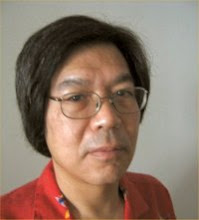More than a week, now in Santa Fe, quite disconcerting. I'm not sure if i'm the type who likes to commune with nature, and so though there are lovely sights and spectacular landscapes, it's rather lost on me.
Took the Georgia O'Keefe Ghost Ranch tour, it turned out to be more fun than i thought it would be, but it pointed out the problems that exist now in terms of critical standards. I still have to think about this, but it was illuminating to finally see "Work of Art" on TV. It was the final episode.
I think about this in relation to what i experienced in Berlin, and how the situation in terms of art has shifted. I forgot who said it (was it Dwight MacDonald?) but the statement was, "If all the cards are wild, you can't play poker." The reference was to "Touch of Evil" because the point was that the film was so outre that there seemed no semblance of "normality".
What standards are we using when we look at art? One of the jobs of critical commentary (it seems to me) is to articulate standards in relation to one's own aesthetic. But the idea of some universal aesthetic has been discredited, but it has not been replaced by anything which provides a general outline for cultural discourse.
We've reached the point where the individuation of taste has replaced any semblance of cultural continuity. So in place of a general culture, we have the preponderance of polls and "consensus" as a replacement. And this leads us to the point where "art" does, indeed, become a game show, and the standards of art are reduced to sound bytes and quips. Hey, wait: in some essay i wrote in the 1980s, didn't i describe the artworld as a variant of "Let's Make a Deal"? Well, my attempts at frivolity, at making a statement that was so preposterous it could never be "real", have come home to roost. But i'm not exactly crowing.
And so we see the result, a result where Georgia O'Keefe is lionized in Santa Fe, because her work now fits into critical paradigms (feminist, gender studies, etc.) which are currently fashionable, yet D. H. Lawrence (another cultural figure who staked out time in the area) is dismissed, because those same standards which hoisted O'Keefe have discredited Lawrence (dating back to Kate Millet's work). Yet am i wrong in thinking that "Sons and Lovers", "The Rainbow" and "Women In Love" remain among the finest works in the Anglo-American literary tradition? I could explain why i think that, but that would also assume an acknowledgement of where Lawrence fits in the British tradition, and the importance of George Eliot and Thomas Hardy. It is not simply a matter of "if X and Y are good, then Z is also good" but an awareness of how Lawrence extended and amplified the aesthetic which Eliot and Hardy represented.
On another note: Reid Rosefelt had a wonderful post on his blog about Angelina Jolie, because i've tried to explain the same thing to people, i.e., how, if you had the chance to meet her when she was about 19 and just starting out, she had a vibrancy and an innate intelligence that bordered on ferocity. She seemed capable of doing almost anything. And no matter what she does now, she was a girl whose future seemed limitless. The only thing i wish is that she would take her acting more seriously. But she's the real deal: a genuine movie star, and she was that from the beginning.


0 Comments:
Post a Comment
<< Home